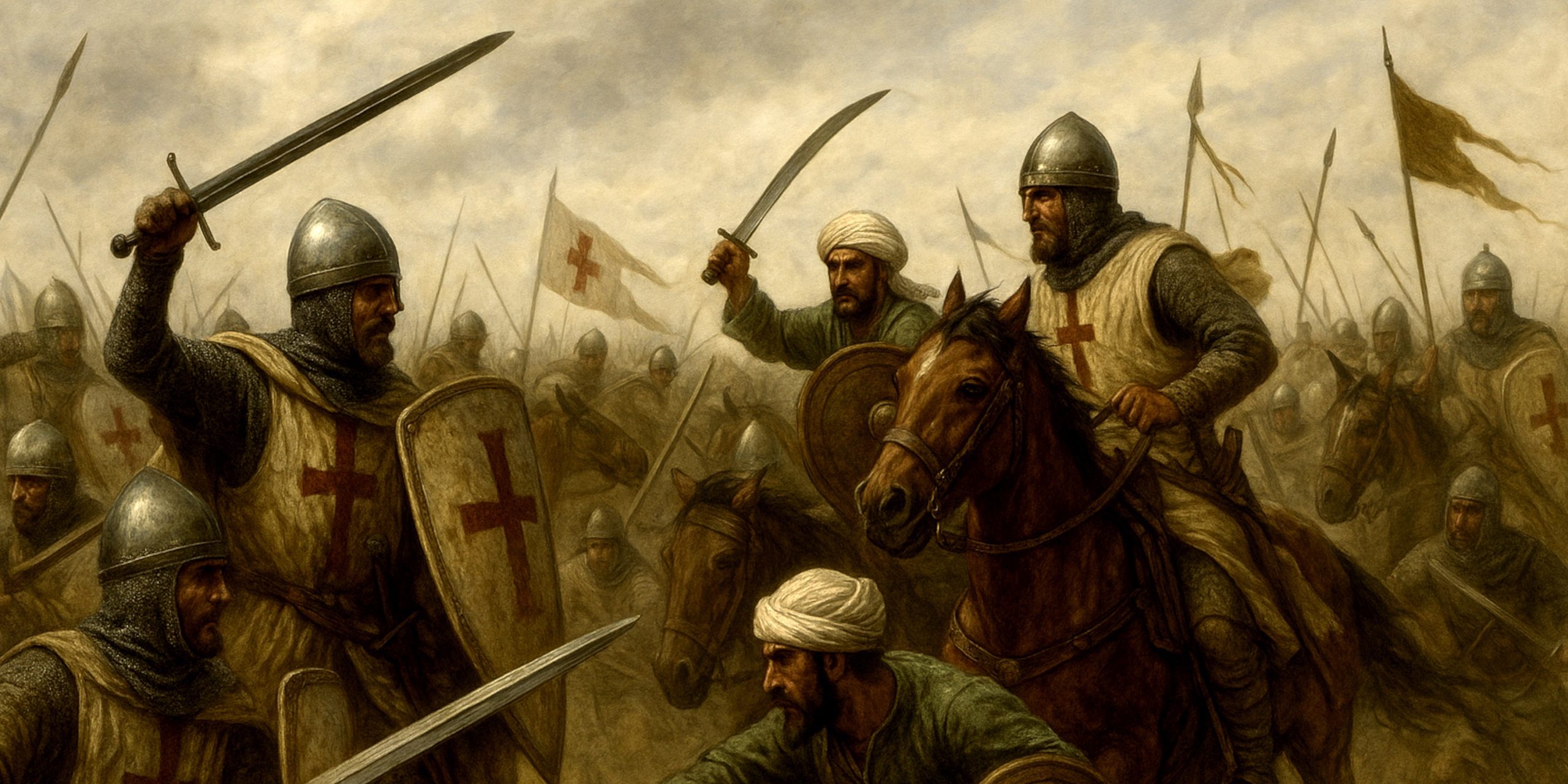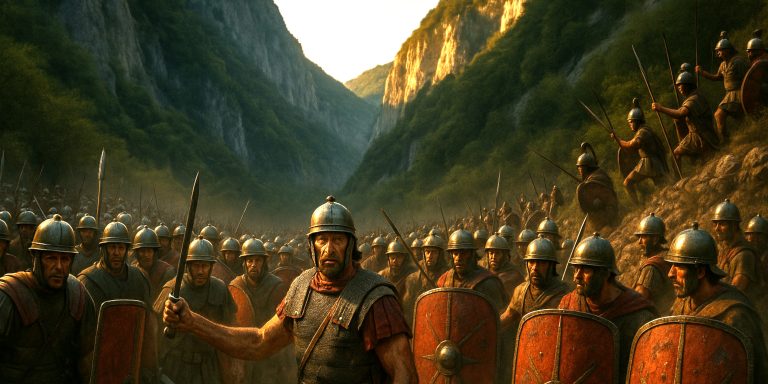
The Battle of Ba’rin, also known as the Battle of Montferrand, took place in July 1137 during the Crusader–Muslim conflicts in the Levant. It was a decisive engagement that highlighted the growing strength of Zengi, atabeg of Mosul and Aleppo, against the Crusader states. The encounter was centred around the castle of Ba’rin (Montferrand), a fortress in northern Syria that became a key target for control of the region.
Background
In the mid-12th century, the Crusader states were struggling to hold their positions against increasingly unified Muslim forces. Zengi’s campaigns were aimed at breaking Crusader strongholds and reducing their capacity to launch raids into Muslim territories. The castle of Ba’rin was strategically important, guarding approaches between Hama and Homs. King Fulk of Jerusalem attempted to relieve the fortress when it was besieged by Zengi, leading to a confrontation that proved disastrous for the Crusaders.
Forces
The sources offer varying estimates of the armies involved. Zengi likely commanded a large coalition force, while the Crusaders, led by King Fulk, were considerably outnumbered.
| Side | Estimated Strength | Key Commanders |
|---|---|---|
| Crusader States | c. 2,000–3,000 men, including knights and infantry | King Fulk of Jerusalem, Count Pons of Tripoli (captured), several barons of the Kingdom of Jerusalem |
| Zengid Forces | c. 10,000–15,000 troops, including Turkish cavalry, archers, and infantry | Zengi, Atabeg of Mosul and Aleppo |
Leaders and Troop Composition
Crusaders
- Knights: Armoured cavalry forming the core of the field army.
- Infantry: Spearmen, crossbowmen, and militia from Jerusalem and Tripoli.
- Commanders: King Fulk, Count Pons of Tripoli, and other leading nobles.
Zengids
- Turkish cavalry: Highly mobile horse archers and lancers.
- Infantry: Spearmen and archers drawn from Aleppo and Mosul.
- Commanders: Zengi in overall command, supported by his emirs.
Arms and Armour
Crusaders
- Swords: Predominantly straight double-edged arming swords of Oakeshott types X–XI.
- Lances: Used by heavy cavalry for charges.
- Defensive equipment: Kite shields, mail hauberks, and conical helmets with nasal guards.
- Crossbows: Increasingly important for ranged support.
Zengids
- Swords: Curved blades such as the early saif, precursors to later Mamluk swords.
- Composite bows: Dominant weapon of Turkish cavalry, effective at both range and close quarters.
- Armour: Lamellar and mail coats, round shields, and helmets of Persian and Turkish design.
- Spears and lances: Used by both cavalry and infantry.
The Battle
King Fulk marched to relieve the besieged fortress of Ba’rin but was trapped by Zengi’s superior numbers. The Crusader army was forced into a defensive position on a hill near the castle. Encircled, short of supplies, and heavily outnumbered, the Crusaders were in a desperate situation. After days of fighting, they sought terms. Fulk and many knights were taken prisoner, though the king himself was released after paying a heavy ransom. The fortress of Ba’rin fell to Zengi, further strengthening his position in Syria.
Archaeology
The remains of Ba’rin castle, though heavily altered in later periods, still stand in modern-day Syria. Archaeological surveys have identified Frankish masonry alongside later Muslim fortifications, indicating phases of rebuilding after the battle. The site offers insight into the strategic importance of such hilltop fortresses in Crusader–Muslim warfare. Artefacts such as arrowheads and pottery fragments found in the region correspond to the period of conflict.
Battle Timeline
- Early July 1137: Zengi marches on Ba’rin and begins the siege.
- Mid-July 1137: King Fulk gathers a relief force and advances.
- July 1137: Fulk’s army is intercepted and surrounded near Ba’rin.
- Several days of fighting: Crusaders resist but are weakened by lack of food and water.
- Late July 1137: Fulk negotiates surrender; many nobles captured, fortress falls to Zengi.
Contemporary Quotes
William of Tyre, the 12th-century historian, described the outcome in sombre terms:
“The king was compelled to yield to necessity, and many of the noblest men of the realm fell into the hands of the enemy.”
Another chronicler noted the humiliation of the Crusader leadership:
“The Franks, pressed by thirst and hunger, delivered themselves and their stronghold into the mercy of Zengi.”
Legacy
The Battle of Ba’rin demonstrated the growing effectiveness of Zengi’s strategy and the vulnerability of the Crusader states when caught outside their fortified positions. The fall of Ba’rin contributed to the consolidation of Zengid power in Syria and foreshadowed Zengi’s later capture of Edessa in 1144, which triggered the Second Crusade. For the Crusaders, the battle was a warning of the need for better coordination and fortification.
Watch the documentary:



